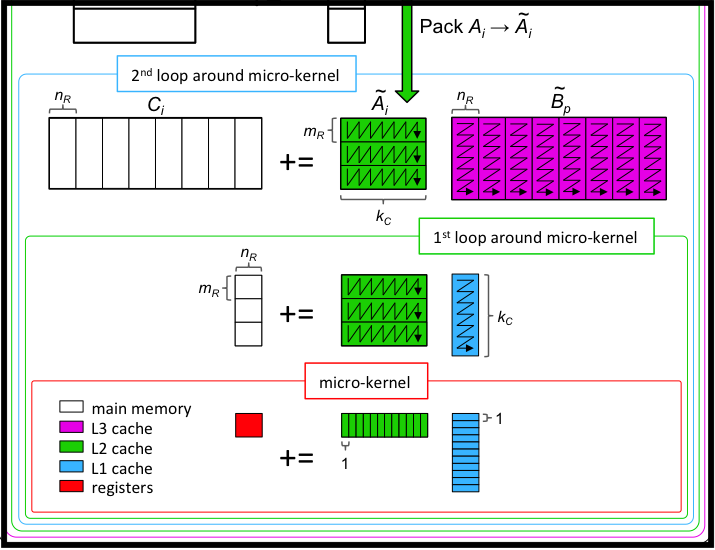Skip to main content\(
\usepackage{array}
\setlength{\oddsidemargin}{-0.0in}
\setlength{\evensidemargin}{-0.0in}
\setlength{\textheight}{8.75in}
\setlength{\textwidth}{6.5in}
\setlength{\topmargin}{-0.25in}
\newcommand{\R}{\mathbb R}
\newcommand{\Rm}{\mathbb R^m}
\newcommand{\Rn}{\mathbb R^n}
\newcommand{\Rnxn}{\mathbb R^{n \times n}}
\newcommand{\Rmxn}{\mathbb R^{m \times n}}
\newcommand{\Rmxm}{\mathbb R^{m \times m}}
\newcommand{\Rmxk}{\mathbb R^{m \times k}}
\newcommand{\Rkxn}{\mathbb R^{k \times n}}
\newcommand{\C}{\mathbb C}
\newcommand{\Cm}{\mathbb C^m}
\newcommand{\Cmxm}{\mathbb C^{m \times m}}
\newcommand{\Cnxn}{\mathbb C^{n \times n}}
\newcommand{\Cmxn}{\mathbb C^{m \times n}}
\newcommand{\Ckxk}{\mathbb C^{k \times k}}
\newcommand{\Cn}{\mathbb C^n}
\newcommand{\Ck}{\mathbb C^k}
\newcommand{\Null}{{\cal N}}
\newcommand{\Col}{{\cal C}}
\newcommand{\Rowspace}{{\cal R}}
\newcommand{\Span}{{\rm {Span}}}
\newcommand{\rank}{{\rm rank}}
\newcommand{\triu}{{\rm triu}}
\newcommand{\tril}{{\rm tril}}
\newcommand{\sign}{{\rm sign}}
\newcommand{\FlaTwoByTwo}[4]{
\left( \begin{array}{c | c}
#1 \amp #2 \\ \hline
#3 \amp #4
\end{array}
\right)
}
\newcommand{\FlaTwoByTwoSingleLine}[4]{
\left( \begin{array}{c c}
#1 \amp #2 \\
#3 \amp #4
\end{array}
\right)
}
\newcommand{\FlaTwoByTwoSingleLineNoPar}[4]{
\begin{array}{c c}
#1 \amp #2 \\
#3 \amp #4
\end{array}
}
\newcommand{\FlaOneByTwo}[2]{
\left( \begin{array}{c | c}
#1 \amp #2
\end{array}
\right)
}
\newcommand{\FlaOneByTwoSingleLine}[2]{
\left( \begin{array}{c c}
#1 \amp #2
\end{array}
\right)
}
\newcommand{\FlaTwoByOne}[2]{
\left( \begin{array}{c}
#1 \\ \hline
#2
\end{array}
\right)
}
\newcommand{\FlaTwoByOneSingleLine}[2]{
\left( \begin{array}{c}
#1 \\
#2
\end{array}
\right)
}
\newcommand{\FlaThreeByOneB}[3]{
\left( \begin{array}{c}
#1 \\ \hline
#2 \\
#3
\end{array}
\right)
}
\newcommand{\FlaThreeByOneT}[3]{
\left( \begin{array}{c}
#1 \\
#2 \\ \hline
#3
\end{array}
\right)
}
\newcommand{\FlaOneByThreeR}[3]{
\left( \begin{array}{c | c c}
#1 \amp #2 \amp #3
\end{array}
\right)
}
\newcommand{\FlaOneByThreeL}[3]{
\left( \begin{array}{c c | c}
#1 \amp #2 \amp #3
\end{array}
\right)
}
\newcommand{\FlaThreeByThreeBR}[9]{
\left( \begin{array}{c | c c}
#1 \amp #2 \amp #3 \\ \hline
#4 \amp #5 \amp #6 \\
#7 \amp #8 \amp #9
\end{array}
\right)
}
\newcommand{\FlaThreeByThreeTL}[9]{
\left( \begin{array}{c c | c}
#1 \amp #2 \amp #3 \\
#4 \amp #5 \amp #6 \\ \hline
#7 \amp #8 \amp #9
\end{array}
\right)
}
\newcommand{\diag}[1]{{\rm diag}( #1 )}
\newcommand{\URt}{{\sc HQR}}
\newcommand{\FlaAlgorithm}{
\begin{array}{|l|} \hline
\routinename \\ \hline
\partitionings \\
~~~ \begin{array}{l}
\partitionsizes
\end{array} \\
{\bf \color{blue} {while}~} \guard \\
~~~ \begin{array}{l}
\repartitionings
\end{array} \\
~~~ \color{red} { \begin{array}{l} \hline
\color{black} {\update} \\ \hline
\end{array}} \\
~~~ \begin{array}{l}
\moveboundaries
\end{array} \\
{\bf \color{blue} {endwhile}}
\\ \hline
\end{array}
}
\newcommand{\FlaAlgorithmWithInit}{
\begin{array}{|l|} \hline
\routinename \\ \hline
\initialize \\
\partitionings \\
~~~ \begin{array}{l}
\partitionsizes
\end{array} \\
{\bf \color{blue} {while}~} \guard \\
~~~ \begin{array}{l}
\repartitionings
\end{array} \\
~~~ \color{red} { \begin{array}{l} \hline
\color{black} {\update} \\ \hline
\end{array}} \\
~~~ \begin{array}{l}
\moveboundaries
\end{array} \\
{\bf \color{blue} {endwhile}}
\\ \hline
\end{array}
}
\newcommand{\FlaBlkAlgorithm}{
\begin{array}{|l|} \hline
\routinename \\ \hline
\partitionings \\
~~~ \begin{array}{l}
\partitionsizes
\end{array} \\
{\bf \color{blue} {while}~} \guard \\
~~~ {\bf choose~block~size~} \blocksize \\
~~~ \begin{array}{l}
\repartitionings
\end{array} \\
~~~ ~~~ \repartitionsizes \\
~~~ \color{red} { \begin{array}{l} \hline
\color{black} {\update} \\ \hline
\end{array}} \\
~~~ \begin{array}{l}
\moveboundaries
\end{array} \\
{\bf \color{blue} {endwhile}}
\\ \hline
\end{array}
}
\newcommand{\complexone}{
\begin{array}{|c|}\hline
\!\pm\!
\\ \hline
\end{array}~
}
\newcommand{\HQR}{{\rm HQR}}
\newcommand{\QR}{{\rm QR}}
\newcommand{\st}{{\rm \ s.t. }}
\newcommand{\QRQ}{{\rm {\normalsize \bf Q}{\rm \tiny R}}}
\newcommand{\QRR}{{\rm {\rm \tiny Q}{\bf \normalsize R}}}
\newcommand{\deltaalpha}{\delta\!\alpha}
\newcommand{\deltax}{\delta\!x}
\newcommand{\deltay}{\delta\!y}
\newcommand{\deltaz}{\delta\!z}
\newcommand{\deltaw}{\delta\!w}
\newcommand{\DeltaA}{\delta\!\!A}
\newcommand{\meps}{\epsilon_{\rm mach}}
\newcommand{\fl}[1]{{\rm fl( #1 )}}
\newcommand{\becomes}{:=}
\newcommand{\defrowvector}[2]{
\left(#1_0, #1_1, \ldots, #1_{#2-1}\right)
}
\newcommand{\tr}[1]{{#1}^T}
\newcommand{\LUpiv}[1]{{\rm LU}(#1)}
\newcommand{\maxi}{{\rm maxi}}
\newcommand{\Chol}[1]{{\rm Chol}( #1 )}
\newcommand{\lt}{<}
\newcommand{\gt}{>}
\newcommand{\amp}{&}
\)
Section 4.3 For speakers
Please keep your talk to around 20 minutes so that there will be time for discussion.
Whether you are presenting in person or online, you will share your materials by sharing your screen in Zoom.
If you are presenting virtually, your microphone on Zoom should be on.
If you are presenting in person, your microphone on Zoom should be off, since a microphone in the room will capture your voice and those who pose questions in the audience.
The moderator will monitor the Zoom chat for questions so that you can focus on the presentation.
